An ideal fluid is flowing through the given tubes which is placed on a horizontal surface. If the liquid has velocities VA and VB and pressure PA and PB at point A and B respectively, then the correct relation is (A and B are at same height from ground level. the figure shown is as in the system is seen from the top):
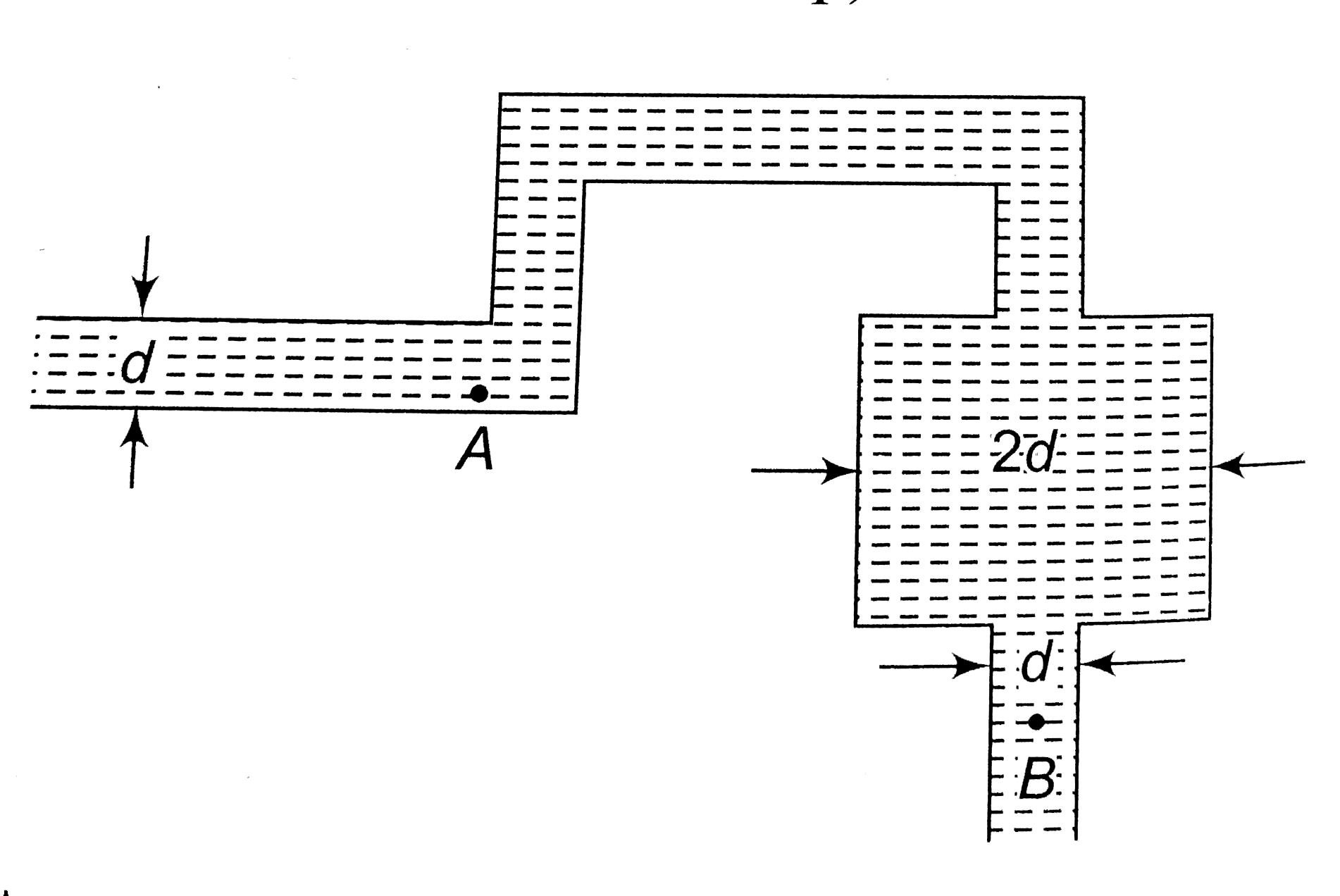
VA>VB,PA<PB
VA<VB,PA>PB
VA=VB,PA=PB
VA>VB,PA=PB
The correct Answer is:C
Applying continuity equation :
V1A1=V2A2
A1=A2 so V1=V2
Applying bernaulli's equation :
P+ρgh1+1/2ρv21=P2+ρgh2+1/2ρv22
since V1=V2, and h1=h2⇒P1=P2
Topper's Solved these Questions
- BOOK - RESONANCECHAPTER - DAILY PRACTICE PROBLEMEXERCISE - DPP No.329videos
DAILY PRACTICE PROBLEM
- BOOK - RESONANCECHAPTER - DAILY PRACTICE PROBLEMEXERCISE - DPP No.3320videos
DAILY PRACTICE PROBLEM
- BOOK - RESONANCECHAPTER - DAILY PRACTICE PROBLEMEXERCISE - DPP No.309videos
DAILY PRACTICE PROBLEM
- BOOK - RESONANCECHAPTER - CURRENT ELECTRICITYEXERCISE - High Level Problems (HIP)21videos
CURRENT ELECTRICITY
- BOOK - RESONANCECHAPTER - ELECTRO MAGNETIC WAVESEXERCISE - Exercise 327videos
ELECTRO MAGNETIC WAVES
Similar Questions
An ideal fluid flows through a pipe of circular cross - section with diameters 5 cm and 10 cm as shown in the figure. The ratio of velocities of fluid at A and B is
 View Solution
View SolutionA particle moving with uniform acceleration from A to B along a straight line has velcities v1 and v2 at A and B respectively. If C is the mid-point between A and B then determine the velocity of the particle at C .
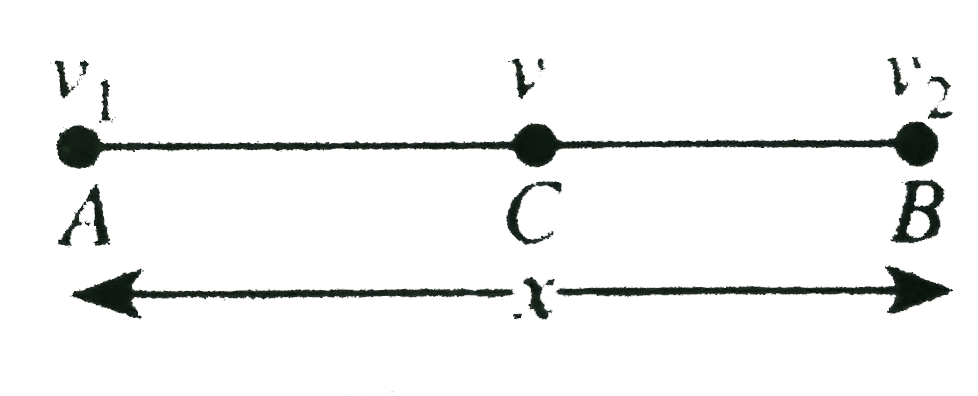 .View Solution
.View Solution
Knowledge Check
- Question 1 - Select One or More
In the figure, an ideal liquid flows through the tube, which is of uniform cross section. The liquid has velocities vA and vB, and pressures PA and PB at the points A and B, respectively. Then
 AvA=vBBvA>vBCPA=PBDPB>PA
AvA=vBBvA>vBCPA=PBDPB>PA - Question 2 - Select One
Figure shows an ideal fluid flowing through a uniform cross-sectional tube in the vertical tube with liquid velocities vA and vB and pressure PA and PB. Knowing that offers no resistance to fluid flow then which of the following is true.
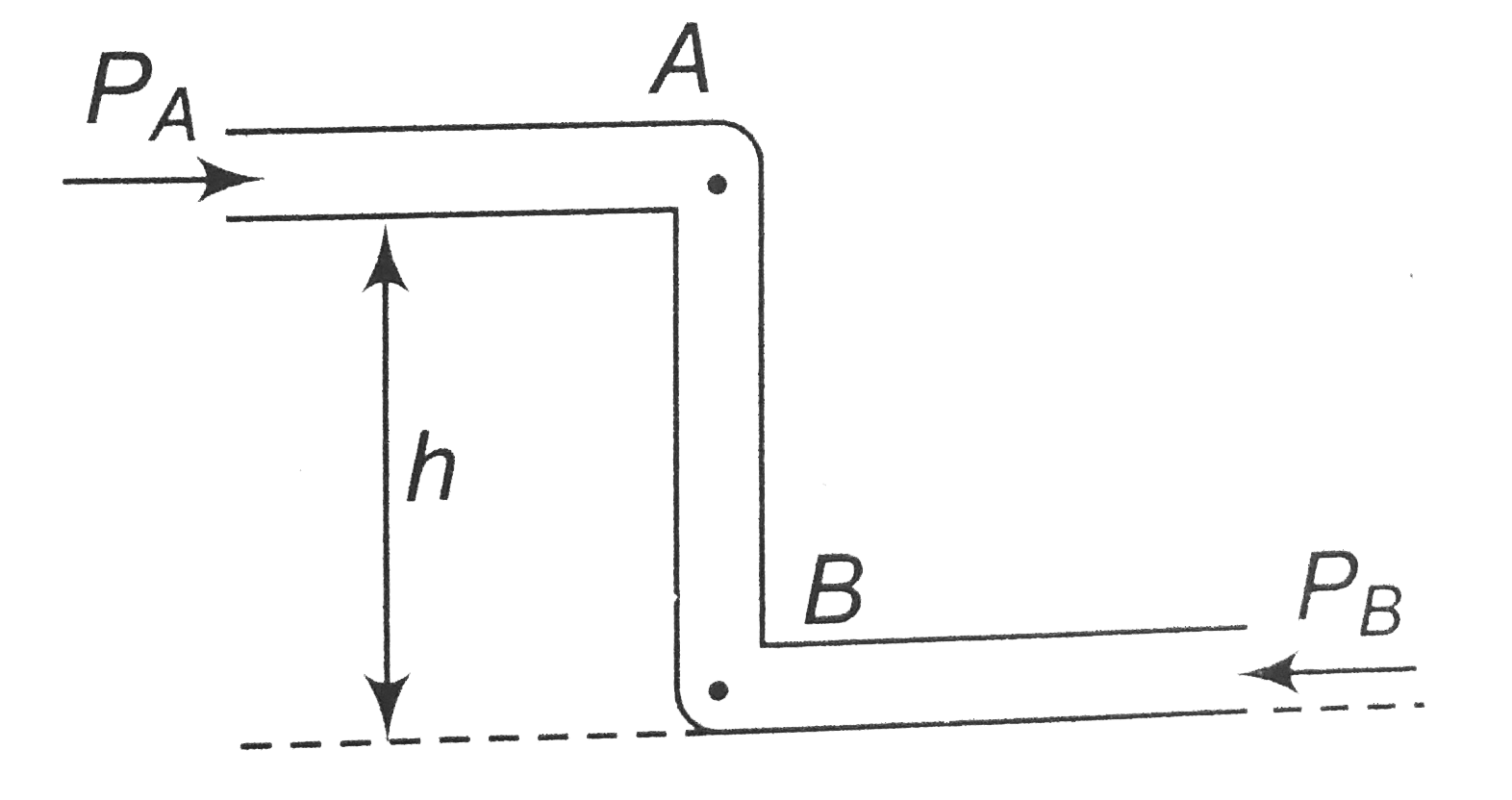 APA<PBBPB<PACPA=PBDnone of these
APA<PBBPB<PACPA=PBDnone of these - Question 3 - Select One
In the figure, an ideal flows through the tube, which is of uniform cross-section. The liquid has velocities vA and vB and pressures pA and pB at points A and B respectively.
(i) vA=vB
(ii) vB>vA ltbr gt (iii) pA=pB
(iv) pB>pA.
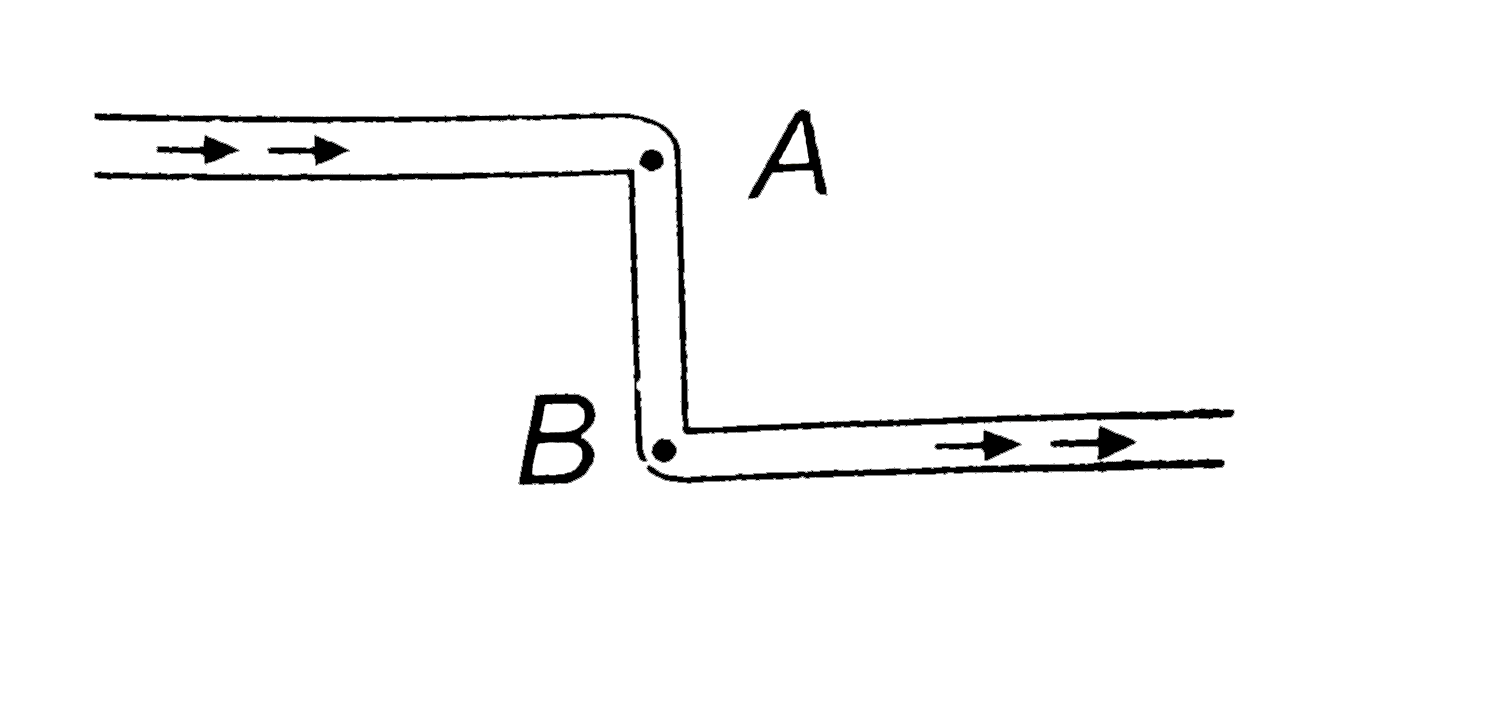 .A(i),(iii)B(i),(iv)C(ii),(iii)D(ii),(iv)
.A(i),(iii)B(i),(iv)C(ii),(iii)D(ii),(iv)
Water is flowing through a long horizontal tube. Let PAandPB be the pressures at two points A and B of the tube
View SolutionAn incompressible liquid flows through a horizontal tube as shown in the figure. Then the velocity 'v' of the fluid is:
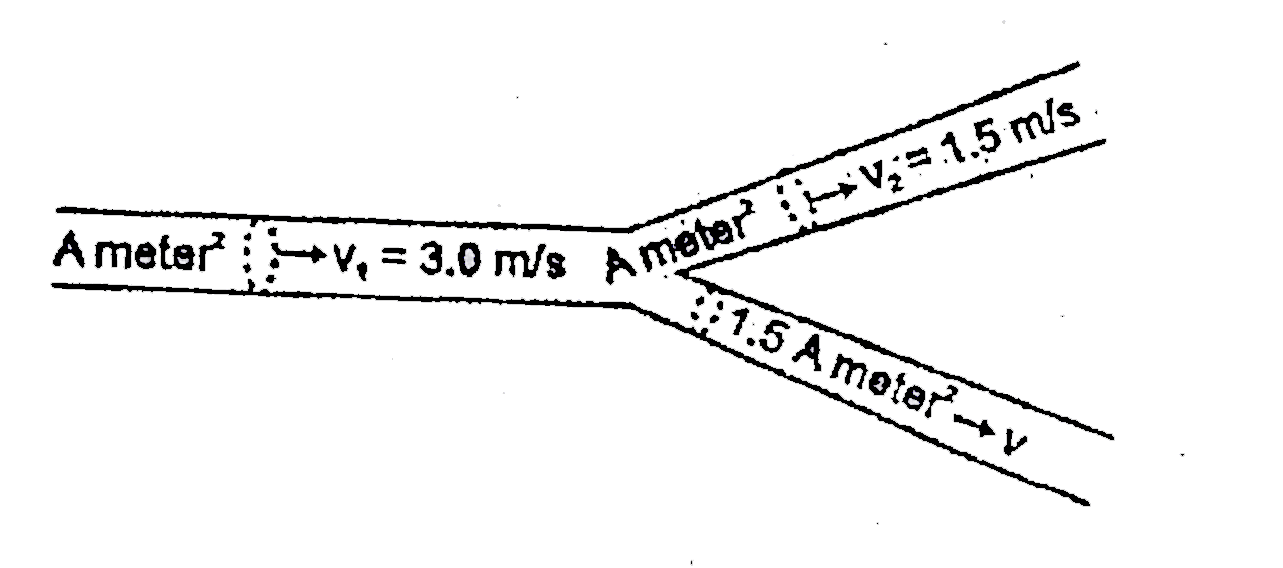 View Solution
View SolutionA hollow conducting sphere is placed in an electric field produced by a point charge placed at P as shown in figure.
Let VA,VB,VC be the potentials at points A,BandC respectively. Then
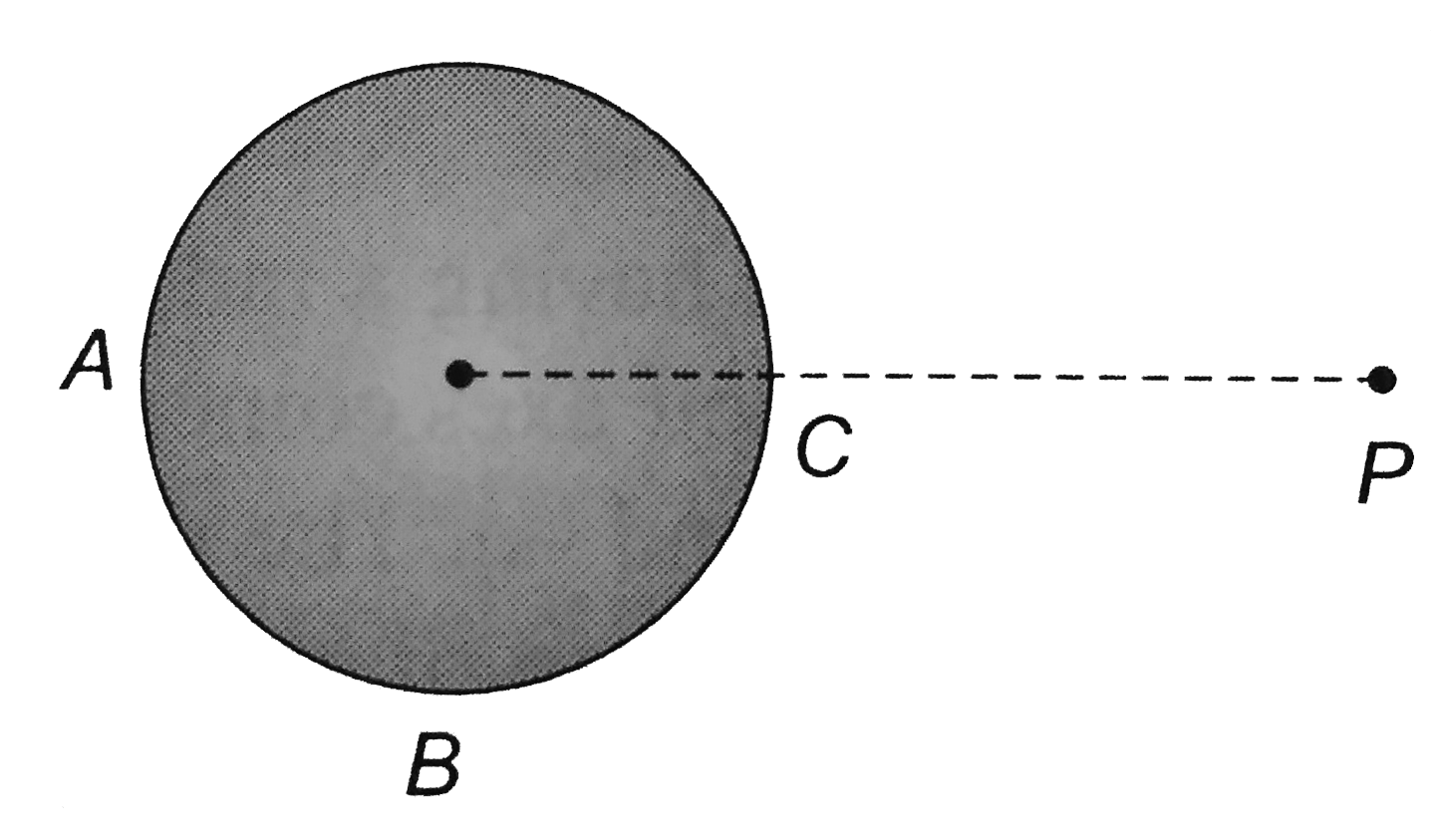 View Solution
View SolutionA capillary tube is dipped in a liquid. Let pressure at point A,B and C be pApB and pC respectively, then
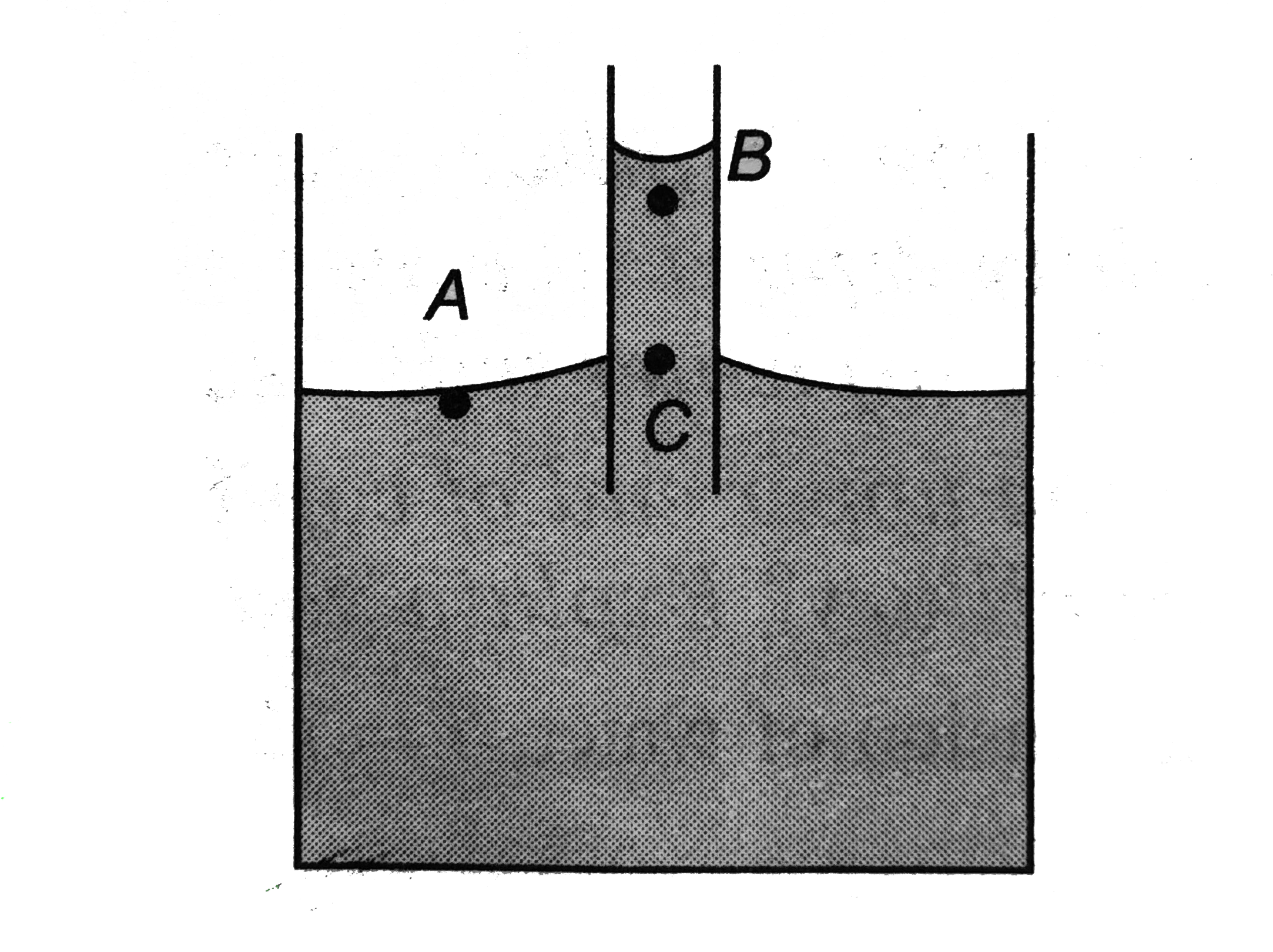 View Solution
View SolutionAn ideal system can be brought from stage A to B through Four paths as shown in the figure. The energy given to the system is minimum is:
 View Solution
View Solution

